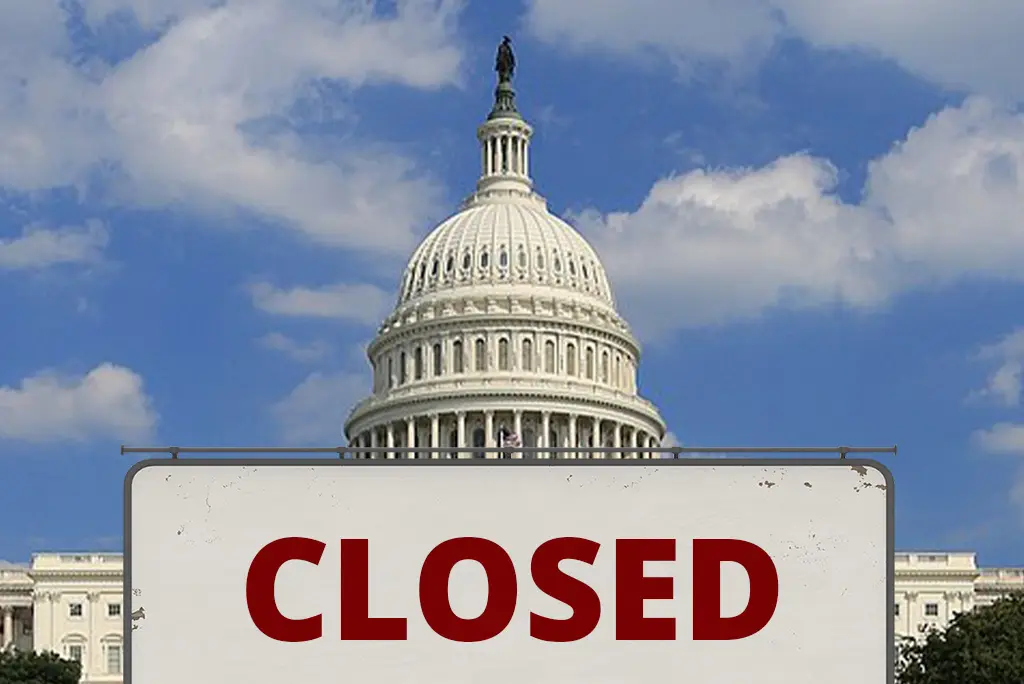The recent debt-ceiling showdown in Washington may lead to another fiscal crisis: a government shutdown. House Republicans wrote spending bills below the agreed levels, risking interrupted services and furloughed workers.
Without passage of the spending bills, a government shutdown could occur by October 1st. The potential shutdown could coincide with the 10-year anniversary of the October 2013 shutdown. Beacon Policy Advisors warned about the possibility of a shutdown resulting from the delay in passing appropriations bills.
Greg Valliere of AGF Investments stated that a stalemate between the House and Senate could lead to a shutdown. House Republicans’ decision to adopt spending targets below the agreed levels creates a clash with the Senate.
The collision course with the Democratic-controlled Senate could escalate pressure on House Speaker Kevin McCarthy.
The debt-ceiling legislation set spending levels for the next two years, but House Republicans deviated from it.
The disagreement particularly affects key spending provisions like defense and healthcare. A government shutdown is likely as the new fiscal year begins on October 1st.
The shutdown would entail interrupted services, shuttered national parks, and furloughed federal workers.
The previous shutdown in October 2013 occurred under a similar political configuration. The potential shutdown raises concerns about the impact on the economy and public services. House Republicans’ actions risk undermining the recent resolution of the debt-ceiling crisis.
The adoption of lower spending targets by House Republicans adds uncertainty to the budget process. The clash between the House and Senate could lead to further political turmoil in Washington.
The disagreement highlights the ongoing ideological divide within the Republican party. The possibility of a government shutdown heightens the need for bipartisan cooperation and compromise. Efforts to avert a shutdown and find common ground are crucial to maintaining government operations.
Rep. Byron Donalds, a Florida Republican, dismisses concerns about government shutdowns. He emphasizes the need for fiscal responsibility. Moreover, according to Beacon, avoiding a shutdown on October 1st would require agreement on a continuing resolution.
However, there is potential resistance from the right flank of McCarthy’s conference to a continuing resolution at FY23 levels. Historical data indicates that extended government shutdowns have coincided with significant stock market gains.
MarketWatch reports that stocks have historically climbed around 2.9% during shutdowns lasting 15 days or more. Consequently, lawmakers must prioritize reaching a consensus to prevent a potential government shutdown.
Nevertheless, the uncertainty surrounding a continuing resolution adds complexity to the budget negotiations. This poses a challenge for McCarthy’s conference in maintaining unity in their approach to the continuing resolution.
Furthermore, the potential overlap of a government shutdown with stock market gains highlights a counterintuitive trend. Therefore, balancing fiscal responsibility with the functioning of government is a critical consideration in avoiding shutdowns.
Past Record of Stock Market Crisis in Government Shutdown
Senate Democrats are preparing a bill to fund the U.S. through early December and prevent a government closure. Budget battles have led to furloughs for federal workers, causing numerous shutdowns since 1976. According to Dow Jones Market Data, most shutdowns occurred under Republican presidents.
These shutdowns have resulted in 20 full or partial closures lasting more than one day. However, the current focus is on resolving the political gridlock and preventing a potential shutdown. President Biden’s decision to meet with Democrats demonstrates his commitment to finding a solution.
According to FactSet, the S&P 500 is projected to decline 2.2% this week through Wednesday. If the losses persist and the government shuts down again, this decline could be considered an outlier.
Historical data spanning 45 years shows that the S&P 500 had positive gains 55% of the time in the week leading up to each government shutdown. During the second shutdown of the Trump administration, the S&P 500 experienced a roughly 7% decline a week before rebounding.
Once government shutdowns occur, stocks have historically experienced significant gains. On average, stocks rose by 0.1% during the past 10 federal shutdowns lasting five days or more. However, when closures were extended for 15 days or longer, stocks climbed by almost 2.9% on average.
These historical trends indicate a complex relationship between government shutdowns and stock market performance. Investors should consider the potential impact of a government shutdown on the stock market. The relationship between government shutdowns and stock market gains requires careful analysis and interpretation.

